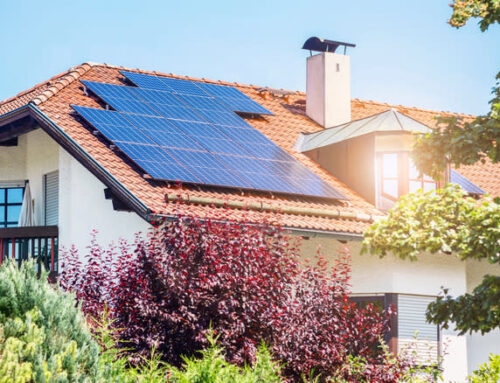More necessary or more perilous? Experts on the case for a European supergrid after Iberia
May 11, 2025
The Russia-Ukraine war, accelerating climate change and ongoing tariff tensions with the US and China have all highlighted one thing: Europe is at an energy crossroads.
In an attempt to significantly ramp up its energy independence, the EU has revealed that it will be adding a further 89 gigawatts (GW) of renewable energy capacity in 2025. That’s an increase of 10GW from 2024, with the majority coming from new solar projects.
This move is estimated to help the bloc reach its 2030 climate goals, which involve reducing net greenhouse gas emissions by at least 55 per cent by the end of this decade, compared to 1990 levels. A supergrid would also decrease the EU’s dependence on gas imports.
However, events such as the recent Spain and Portugal power outage have illustrated that the continent may need a more structural energy solution.
Some experts think a European supergrid is the answer.
This would mean drawing up a cross-border high voltage electricity grid, complemented by a sufficient grid infrastructure at all voltage levels. Such a grid would likely be capable of providing electricity to the whole of Europe, including Türkiye, as well as some parts of North Africa.
Does Europe need a supergrid?
As electricity demand continues to increase every year, one of the main benefits of a European supergrid could be energy stability. Even though Europe is investing more in renewable energy projects such as solar and wind, these cannot be relied upon all the time.
Wind turbines cannot generate electricity once the wind stops blowing, while solar panels also stop working at night. As such, these facilities cannot produce a continuous flow of electricity.
In other cases, renewable electricity production may surpass demand – especially during times of high wind and solar generation.
This surplus can not only weaken electricity prices, but also prompt manufacturers to give away electricity, instead of exporting it or storing it.
Michael Ashley Schulman, founding partner and chief investment officer (CIO) at Running Point Capital Advisors, says that, “As the continent leans harder into renewables, it’s clear that wind in the north, sun in the south, and scattered hydro (energy) need a way to meet in the middle.
“A supergrid would allow green energy to flow across borders efficiently, balancing supply and demand; it could smooth out energy highs and lows, cut prices, boost resilience, and help Europe ditch fossil fuels faster.”
Instead of a single supergrid, Europe may very well need several, and not necessarily a Europe-wide supergrid, according to Hubert de la Grandière, CEO ofSuperGrid Institute.
“Several multi-terminal high voltage DC (HVDC) networks are already planned by France, Great Britain, Germany and Italy, among others. These are “small supergrids,” he explains.
“Like motorways in the last century, a supergrid will probably emerge through progressive connections between several HVDC links and multi-terminal networks, providing these are designed to be scalable or extended.”
De la Gandière also highlights that offshore supergrids, which are the first examples of emerging European supergrid infrastructure, could be an effective way to save CO2, costs and materials for the significant integration of offshore wind energy.
Alexandros Fakas Kakouris, senior manager of energy and policy systems at Renewables Grid Initiative, points out that: “Electricity grids enable electrification, renewable energy sources (RES) and market integration, thus making them central to achieving a timely, cost- and resource-efficient energy transition.
“In turn, this will boost EU energy security, competitiveness, and allow societies and industries to leverage its multifold benefits.”
However, a supergrid may not be the only solution, and will still need to be part of a broader transformation, instead of a substitute for it.
Therese Guttmann, Institute for Ecological Economics, Vienna University of Economics and Business, explains: “A supergrid must serve ecological integrity, social equity, and energy democracy – not just economic efficiency or corporate scale. It should connect regions, not concentrate control.”
Has climate change heightened the need for a European supergrid?
Climate change, in the form of extreme weather events like floods and heatwaves, significantly increases risks to existing conventional energy infrastructure, while accentuating the variability of solar and wind power.
A supergrid could help maintain energy resilience and security by diversifying electricity transmission pathways and connecting different countries with more energy sources.
Whether at a super-sized level or not, investment is sorely needed. According to the European Commission, approximately €584bn in grid investment is required by the end of this decade, in order to stay on track for energy transition goals.
The International Energy Association (IEA) has also said that “lack of grid development, including expansion, presents risks to electricity security, while both limiting the pace and increasing the cost of clean transition.”
Kakouris points out: “Due to the expected increase in RES penetration, often located in remote areas, a lack of sufficient grid capacity, both cross borders and within countries, could quickly become a relevant bottleneck of the energy transition in many areas and raise operational challenges.”
But Guttman advises caution when it comes to building supergrids, despite climate change.
“Urgency is not a license for reckless infrastructure. A supergrid built in haste, without ecological and social safeguards, risks solving one crisis while deepening others. We need systems that decarbonise and decentralise, that speed up and stay fair,” she tells Euronews Green.
A supergrid cannot replace other complementary energy distribution solutions, according to Doron Shmueli, CEO of MayMaan Research.
“While a supergrid could help better distribute renewable energy across Europe, it should be seen as a complementary solution, not the sole answer,” he says.
“A combination of large-scale infrastructure improvements and decentralised energy solutions, like existing off-grid technology, is essential for reducing reliance on overburdened grids.”
What are the challenges of establishing a Europe-wide supergrid?
Although several EU member states such as Denmark, the Netherlands and Germany have been attempting to develop national supergrids, efforts to build a Europe-wide supergrid have slowed down in recent years.
Aside from the huge financial investment it would require, one of the biggest reasons for this slowdown is highly complex permitting processes across member states.
Ineffective implementation of EU and national legislation, as well as the challenges of coordination between the EU’s many private and public institutions and regulations have made it harder to establish a European supergrid. Public opposition, including from municipalities, has also contributed to this issue.
“Stitching together dozens of national grids isn’t just an engineering project; it’s a political minefield. Every country guards its energy sovereignty like crown jewels, and nobody wants new power lines in their backyard,” says Schulman.
“Add sky-high costs, cybersecurity risks of a hyperconnected system, and regulatory spaghetti, and you see why the supergrid remains more PowerPoint dream than reality. Europe doesn’t just need cables – it needs political will, big wallets, and the ability to think beyond its own borders.”
Cost allocations in a cross-border scenario can be challenging, as benefits can often be seen far away from where the investments need to be made, potentially leading to disputes between member states.
Kakouris urges long-term thinking. “Achieving system optimisation requires prioritising the ‘best value’ approach at the right moment, over the ‘least cost’ one. Otherwise, limited ambition with regard to electricity grid development will, with certainty, prolong reliance on fossil fuels,” he says.
Other challenges include establishing clear interfaces and rules at the system level, so that converters from different manufacturers can work together, as well as finding enough manpower and industrial capability to sustain the supergrid.
The recent Iberian power outage has also raised concerns of a European supergrid potentially being too interconnected, and so vulnerable to large-scale outages and cyberattacks.
“On one hand, the outage highlights the fragility of isolated grids and makes the case for broader, interconnected networks that can back each other up in a crisis,” considers Schulman. “On the other hand, it reminds everyone that linking dozens of countries together could mean one localised failure ripples across the whole system.
“A supergrid would offer more resilience if done right, but also bigger risks if security, coordination, and redundancy aren’t bulletproof. In short, the blackout makes a supergrid look more necessary, but also more perilous if half-baked.”
Guttman emphasises that a supergrid isn’t just about wires.
“It’s about power, access, and direction. Without addressing questions of governance, distribution, and legitimacy, large-scale projects stall or face resistance, no matter how ‘green’ they claim to be,” she says.
“The real challenge is not technical – it’s visionary. Can we build a grid that supports a just transition, respects local agency, and stays within ecological limits? If not, we risk replacing fossil lock-in with a new form of centralised, green extractivism.”
Search
RECENT PRESS RELEASES
Related Post




